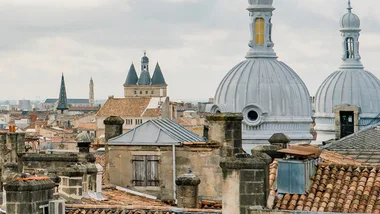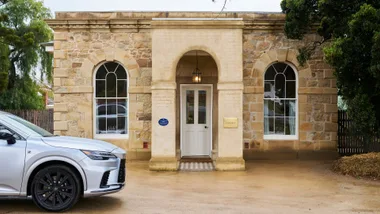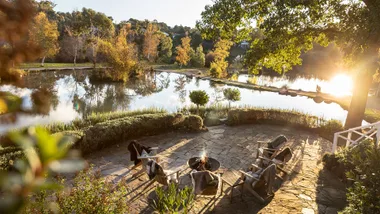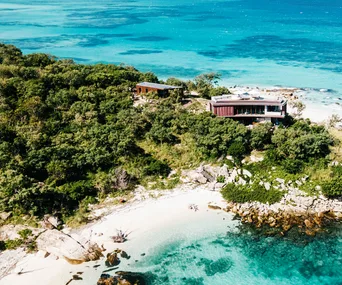THE FINE PRINT
**Getting there
**Tours leave from Lima. Qantas offers six return services a week from Sydney to Santiago, Chile, via Auckland, on codeshare services operated by Oneworld partner LAN. LAN Peru provides connections to Lima.
Intrepid Travel‘s Inca Trail tours run all year, except for February when the track is closed for renovation. The eight-day tours include the internal flight to Cusco, accommodation and meals on the Inca Trail. The tour costs $885 plus a local payment of about $320.
It’s day two and we climb with our heads down, our wooden hiking poles thrust forward. As we ascend into the clouds, the chatter stops. The air is thin up here and this tight troupe of novice hikers agrees: it feels like we’re sucking oxygen through a straw.
For a colourful range of reasons, we’ve all signed on to hike the Inca Trail, a 500-year-old pilgrim route that winds its way skyward over three Andean passes to the mystic city of Machu Picchu. It’s a four-day climb at high altitude, reaching 4200m at its peak.
Today our group of 10 – mostly adventurous solo travellers from Australia, Canada and Ireland – has been walking since daylight and the pace is agonisingly slow. Half have been battling altitude sickness. All of us, however, have been struggling with our egos as we realise this Incan caper is tougher than we thought. The brochure had warned of this, dedicating a whole column of tourist blurbage to “overcoming mental obstacles” and remaining positive, which initially struck me as odd. Now I take comfort in knowing this high-altitude egoic anguish is a common affliction.
As I say, it’s day two. And suddenly there’s a shift in ambience. Some might call it delirium; I can only describe it as a ‘surrendering’. My mind and body stop rebelling against the discomfort and give in to the task of lugging my frame up the stone steps that mark the trail. A rhythmic calmness sets in and suddenly I become aware only of the sheer magnificence that surrounds us. As the trail rounds another bend, the mountain drops away to plunging valleys, rocky outcrops and snow-dipped peaks that tumble in layers to the horizon. Cotton-wool clouds slink in and out and loll around in the vast chasms of pure, unadulterated… space. I’m inspired to declare that it’s like something only Tolkien could have created. Only grander. And more vivid.
Of course, the Inca Trail has had this effect on people from its beginnings. It was built from large slabs of granite using the same care and ingenious architectural techniques that have preserved Machu Picchu from Spanish invasion and natural disasters. There is speculation as to what role Machu Picchu served five centuries ago, before it was mysteriously deserted in the 1550s. No written records of Incan history exist, but historians seem to agree that it was built as a holy retreat for the emperor. The Inca trail, then, existed as a spiritual route on which pilgrims were able to connect with natural symbols of worship and animal engravings found in ruins along the way. Today, it’s hard not to feel the omnipotence of this connection with nature. It’s there at every turn, inherent in every damn rocky step.
But, sadly, reminders that this natural wonder is fast being spoiled are equally prevalent. There are about 400 hikers on the trail at any one time and the uphill surge is taking its toll. The track is worn in places and water bottles litter the path, despite the fact they’re banned (curiously, locals sell the stuff en route). The Peruvian government seems torn between the lure of the tourist dollar and preserving the very thing drawing the moneyed crowds. They’ve limited the number of hikers allowed on the trail, but fail to cap the influx of tourists that spew forth from the buses and trains that now run directly into Machu Picchu. A few years back, a sacred sundial was broken during the filming of a beer commercial in the ruins and stones were moved to make way for a helicopter pad. Indicative of this paradox is that the site became one of the New Seven Wonders of the World last year; and was placed on the World Monuments Fund’s 100 Most Endangered Sites list just months later.
Which brings us neatly to the reason why I’ve set out on the hike. In short, it’s to experience one of the world’s most spectacular tourist destinations, but in an environmentally aware manner. And to, hopefully, inspire others to consider doing the same when they next set out in their Gore-Tex and Polarfleece trappings. I grew up on a subsistence-living farm and family holidays were an exercise in leaving behind the faintest of footprints at the string of camping grounds we visited every summer. It’s been a way of life for me, but I was curious as to how it’s been done on a larger scale.
There are literally hundreds of operators leading Inca Trail tours (you can now only complete the trail as part of a led group). But Australian outfit Intrepid entered the fray just over a year ago with a version that takes a green slant. I must say I was cynically expecting to be ambushed with the usual arms-length eco-marketeering and fashionable carbon offsetting. Mercifully, Intrepid chooses to take a softly-softly approach and one that requires hands-on involvement from guests. They try to encourage mindful engagement with the journey and a commitment to reducing consumption, recycling, as well as offsetting carbon emissions. There are no glossy swing tags on luxury bathrobes pronouncing they’re made from organic cotton. No menu inscriptions that tell guilt-laden guests their eggs Benedict hail from happy chooks. Indeed, luxury robes and decadently calorific meals are not on the itinerary. This is a far more earthy experience.
So, how does one start an earthy, hands-on trek? With a very earthy, hands-on trip aboard Peru’s public transport system. On day one, we set off by local bus from Cusco, the grand gateway city to Machu Picchu about 80km from the start of the trail. Cusco is a magnetic city of cobblestone plazas and winding alleyways, fusing Spanish influences with the ways of the Quechua-speaking descendants of the Incas. The cathedral in the central Plaza de Armas, for instance, features a fresco of The Last Supper with Jesus eating guinea pig, a sacred motif of Incan paganism. Andean farmers wear Quechuan-style embroidered layers, with the traditional felt hats left over from the Spanish invasions, while cooking llama skewers on the streets for tourists. Much more could be said about Cusco; for now, it’s enough to say it’s worthy of an extended stopover.
Our guide, the über-smooth Uriel, hailed our bus and we joined schoolkids and farmers carting tractor equipment on the vinyl seats. Intrepid’s logic is that by using existing services, it reduces fuel, eliminates demand for unnecessary infrastructure, and bolsters the local economy. The group is also kept small – no more than 12 – to minimise ‘socio-economic impact’.
After a theme park-like ride through the winding Sacred Valley, we stopped for a lunch of trout soup at a local restaurant that the larger tour groups simply wouldn’t notice from their behemoth tour buses. We also stop at a small Andean village and are encouraged to buy knick-knacks here from the artisans, to save transport costs and to put money directly into the hands of local people. They’re seemingly micro initiatives but, as I learnt growing up, it’s through consistent commitment across everything you do that change gathers momentum.
Late that afternoon, we arrived at the charming town of Ollantaytambo, a rustic collection of canchas (courtyards), cobblestoned streets and low-slung wooden buildings selling Alpaca beanies, diarrhoea tablets and bags of coca leaves that Uriel advised we stock up on. Chewing coca combats altitude sickness and gives you energy. And it’s thoroughly and throat-numbingly revolting. We spent the night here in a small wood and stone hostel. As with most of Intrepid’s accommodation, it’s built using local materials, there is no airconditioning and a water fountain is provided for guests to fill up water bottles.
The next day entailed another bus ride to the start of the walk where we met the porters. Now a few words must be said about the porters because they are truly a marvel unto themselves. These farmers are recruited to carry everything for the group – tents, sleeping bags, food, all our personal gear (which we must limit to 5kg) and the not-so-proverbial kitchen sink. For our group of 10, 18 porters are assigned, including head chef Wilber who wears a chef’s hat and a naughty grin the entire trip. While we struggle with our pithy day packs, they run ahead carrying 25kg-loads strapped to their back. And, yes, they literally run. While wearing sandals made of old car tyres.
At lunch and afternoon tea stops, the posse of porters arrives ahead of the gringos. At night, they prepare our tents and emerge from the fully functional kitchen they’ve just carted uphill to issue all of us with a round of applause when we stumble into camp. Honestly, it’s embarrassing.
Day one, after crossing the Urubamba River and climbing gently through grassy plains and quaint rural hamlets, we were stunned to arrive to a multi-course lunch including avocado and shrimp salad and a delicate, chowdery fish soup. Small basins of warm water, with soap and towels, had been laid out for us to wash sweaty hands and faces. One of the younger porters had folded napkins into ornate origami structures. He kept this up every meal; a different configuration each time.
That night, we camped at Ayapata at an altitude of 3300m under the clearest skies we’d ever known. It was undoubtedly cold – although the Intrepid-issue sleeping bags are high-end – and most of us didn’t sleep much, in part because we had to adjust to the idea of sharing a two-man-sized nylon dome with a stranger. We awoke the next day, at dawn, to a tap on the tent from the porters. True to ludicrously formidable form, they came bearing hot tea and more warm towels. I wanted to hug each one of them.
And so began day two. It is by far the most challenging, involving a three-hour ascent up vertical stone stairs to the highest point of the trek at Warmiwanusca, or Dead Woman’s Pass. A few hours more and we cross the second pass at Runkurakay, before descending again. The world, I’ve decided, is divided into two camps – those who hate climbing up and those who hate descending even more. I’m definitely in the latter camp. But by this stage, I’ve entered my mindful reverie. I’m in the Inca zone and the next two days are a dizzying ménage of views across lichen-bearded forest veiled in a delicate mist, wild orchid sightings and snippets of Incan history courtesy of Uriel; all set to the background buzz of a circa-70s wireless that one of the porters, Freddy, has pressed to his ear the entire trip.
We also get fed a steady diet of cultural information. Like all Intrepid guides, Uriel is a local and is encouraged to inculcate tourists in issues affecting Andean people today. He shares with us Incan philosophies that are enshrined in various carvings along the way, represented by different animals and natural phenomena – notions such as hard work as a virtue, a responsibility to share knowledge and, my favourite, “munay”, which means to infuse everything you do with love. These, says Uriel, are still part of “the Andean way”.
On the final night, we camp at the Wiñay Wayna ruins, which gorgeously translates as ‘Forever Young’. Not so gorgeous are the heaving crowds at the campsite who feel compelled to take advantage of the alcohol you can buy here. Most groups camp here because it’s the best position for getting to the Incan Sun Gate at sunrise, from which you get the first elevated glimpse of Machu Picchu in the ethereal morning light.
As we await dinner, Uriel explains that Peru boasts 84 of 104 life zones in the world. I can certainly attest to the incredible array of ingredients on offer in Peru, most of which we experience from Wilber’s demountable kitchen. Everything from avocados, figs the size of your fist, goat’s cheese, nuts, several dozen types of potatoes, alpaca (a gamier version of lamb) and guinea pig (which should never be compared to anything edible). Part of the Intrepid philosophy is to eat unprocessed food from the immediate area to reduce food miles.
And so we arrive at Machu Picchu just as the sun gets high enough to bake the early mist from the peaks. The rambling city of stone terraces and pitch-roofed houses is undoubtedly an incredible monument to human endeavour and possesses a mystical aura that stems, at least for me, from the knowledge that it escaped Spanish pillaging and remained ‘lost’ for centuries. They never found it and indeed the famed historian Hiram Bingham struggled to locate it in the early 1900s, such is its tactical placement in the mountains.
But as Jean from Ireland said, when we finally entered the ruins and joined the clambering crowds pouring in from the bus station, “I’m not blown away; I feel I should feel more awe than this”. As we got on the train back to Cusco (again avoiding the roaring airconditioned tourist buses), our group agreed the journey was certainly the destination on this trip.
So how did the jaunt fare in the eco stakes? There are certainly small steps that can be taken with a trip like this to reduce and recycle resources. The bigger impact, however, is made with transport choices. By taking public buses, our carbon emissions were half that of private transport and by catching the train instead of a private chartered bus, emissions were cut by a third. It may interest some that, for the eight-day trip including all accommodation and transport, I contributed .55 tonnes of carbon dioxide, equivalent to driving a car 1900km (most of this was consumed in the flight from Lima to Cusco). This sorry lot of energy was offset by Intrepid with an Origin Energy scheme that invests in renewable energy projects around the globe.
 julian kingma
julian kingma









